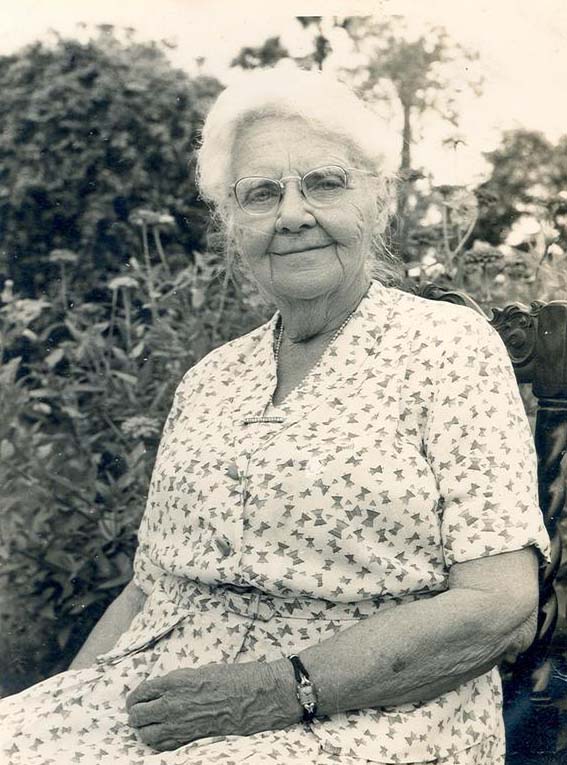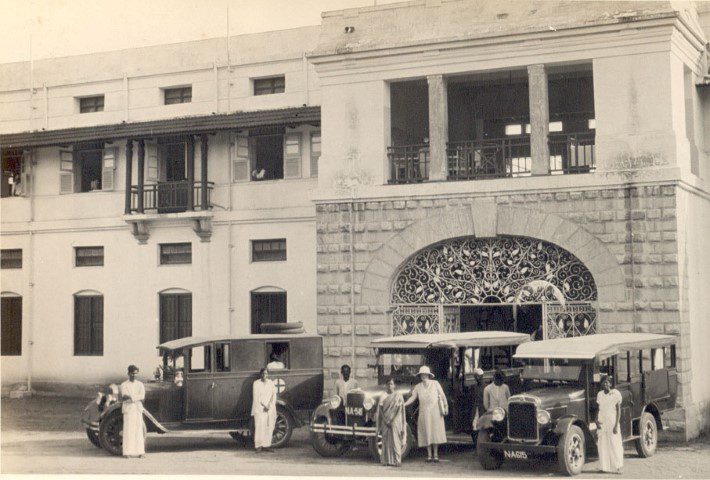Angela Joseph
New Delhi, India

This article is dedicated to the loving memory of my mother, Dr. A.C. Ammini.
Born in India in 1870, Ida Sophia Scudder belonged to a missionary family. Her grandfather, Dr. John Scudder, was the first medical missionary from the United States to work overseas; and each of his seven sons contributed to missionary service in India. All in all a total of forty three members of the Scudder family gave over 1,100 years of missionary service to India.1
Ida was educated in the United States and graduated from Northfield Seminary in Massachusetts, she then returned to India to take care of her ailing mother. Unlike her predecessors, she was determined to go back to America for she could not bear the thought of becoming a missionary like them. Life as a missionary in India meant being surrounded by strife, poverty, famine, and disease, not the life she had envisioned for herself. She had plans to enroll at Wellesley College, get married, and live comfortably in America, far away from the struggles of a missionary life in India.1
It has been said that life happens when we are busy making other plans. It happened one night, while Ida was writing a letter to her friend explaining why she did not want to become a missionary, that three men came to her doorstep one after the another pleading for help. All three had the same predicament; their pregnant wives were undergoing difficult childbirths and the traditional midwives were helpless, so the men were running from pillar to post desperately seeking help. Although Ida could not be of assistance in that matter since she was not medically trained, she suggested to the men that her father who was a doctor could go with them and salvage the situation. All three men refused, for this was inconceivable to them, “How could they allow a strange man to look at their wives! It was better they died in childbirth than compromise their religious beliefs which had governed their lives since birth”. Only a woman could help, and they were adamant about it. According to the prevailing social customs and religious norms, men were forbidden to enter the female quarters of a household, so accepting help from a man was not possible. Ida spent the whole night in sleepless anxiety, and even before could inquire about the fate of the three women she heard funeral processions making their way in the street. All three women had died and Ida’s heart sank, for the incident shook the very core of her being, such that it steered her away from her plan, leading her on to a path she had so vehemently denied earlier. The same morning she tore up the letter on her desk and wrote a new one reflecting her change of heart.2
Ida left for the United States as planned, but instead of joining Wellesley College went to Cornell University Medical College and graduated in the first class it opened to women. She then returned back to India to join her parents in Vellore, a city in south of India. Using a 10 x 12 feet room in her father’s house she opened a dispensary and through the window handed out medicines to an ever increasing queue of patients. To accommodate them she knew she had to gather funds for a hospital and she set upon this task with her usual zest. At last her efforts were rewarded when a man from New York donated $10,000 to build a hospital in Vellore in memory of his loving wife Mary Taber Schnell.1
Built in 1900 and dedicated in 1902, the Mary Taber Schnell hospital was big enough to accommodate twenty-eight beds but nowhere close to the growing needs of those around her. She had to put patients on mats under the beds, in corridors and verandahs. There was also a dearth of adequately trained medical staff. So in 1909 she undertook the venture of starting a small nursing school, which evolved over the years awarding over 400 nursing certificates. In 1946 it became the first graduate school of nursing in all of India, affiliated with Madras University that conferred BSc degrees.1
The quest to reach out to as many people as possible pushed Ida out of the confines of the hospital to nearby villages surrounding Vellore within a twenty-five km radius. Using her tiny French Peugeot, she would stop at the outskirts of a village or under a shady tree and cater to all those who sought medical help, and this marked the beginning of the “roadside clinics”. Every week she would stop at stations picking up people along the way, delivering medicines, and giving medical assistance.1

Christian Medical College Vellore, ready to leave
for the roadside clinics.
In 1913 Ida had no choice but to request her mission board for $3,000 to make additions to the existing hospital as it was much too small to meet the needs of the people. She hoped to open a much larger medical college for women, but when she put forth this proposal at a Missionary Medical Conference it was met with skepticism. They questioned the possibility of such a thing, for the idea was far beyond the realm of practicality and the costs involved were far too high. Yet determined to make it happen, Ida persuaded two Baptist women, Mrs. Lucy Peabody and Mrs. Helen Montgomery, on their tour to India to visit Vellore. Both these women wanted to build a women’s Union Christian College in India. Their initial plan however had been to build a college of arts, not medicine. That changed when Ida took them to a village and sensitized them to the needs of the people there. They were informed that in a country of more than a hundred and fifty million people there were only a hundred and fifty women doctors. On inquiring about the scarcity of Indian women doctors, they were told that there was only one medical school for women in India, which was in the north and Indian parents were wary of sending their daughters so far away from home. This prompted them to ask Ida to start a medical college for women in a valley outside of the town that resembled nothing more than a wasteland with a few goats and cows grazing, while the two women set to work in America and Britain to gather funds for the project.1
Against all odds and despite doubts cast by government officials (concerns regarding infrastructure and costs) Ida opened the medical school in 1918 in a rented building with seventeen girls, fourteen of whom graduated in 1922. The fledging institution grew each year until 1932, when the entire student body comprising of 105 members moved into the beautiful white stone quadrangle of college buildings in the valley where years before Ida had pictured her medical college for women.1
Things seemed to run smoothly until 1938, when the government of Madras Presidency abolished the medical practitioner’s certificate course, which was a big blow to her institution. The choice was clear, either to call it quits or else to upgrade to a university status, which almost next to impossible. Upgrading to a university status meant an increase in faculty, courses, infrastructure, and costs. Neither her age (for she was well into her seventies) nor the current state of affairs deterred her commitment to her cause. Ida refused to back down and charged forward with her usual fervor on a three year fund raising trip in the United States. The decision to transform the medical college for women into a co-educational one (where both men and women were allowed to study) along with the financial support she gathered over the three years from various international organizations from all over the world made the Christian Medical College and Hospital in Vellore one of the leading medical institution in India and abroad.1
Dr. Ida Scudder did not make a ground breaking medical discovery, but what she did discover was the triumph of the human spirit in the face of adversity, the richness of human potential to stretch beyond social and cultural barriers, and the healing power of compassion and empathy that eases the pain of disease and suffering. This is best exemplified by the story of her first patient. During her early years as a medical doctor in Vellore most patients would prefer to go to her father, so that when a family approached her to pay a visit to their home to pay heed to their sick mother, she was eager to prove herself. When she saw that her patient was an old woman in a very dire situation which only spelled death, she did not leave disappointed but instead chose to remain and do everything to make the woman’s last hours as comfortable as possible. She requested that the woman be moved from the dark, damp room to a shady part of an open verandah. In all humility and kindness she moistened the woman’s lips with water and bathed her using her own handkerchief. Alleviating the agony that usually accompanies the last hours of a person’s life, Ida did her best to ensure that the woman had a dignified death. Such was the magnitude of the compassion and empathy she bestowed on all who sought her aid that long after she died the city of Vellore fondly remembers her as “Aunt Ida” an angel of mercy.
References
- Wilson, Dorothy Clarke. “The legacy of Ida S. Scudder.” International Bulletin of Missionary Research, 26-30.
- Roy, S.C. “CMC Vellore-In service to the nation.” Science and Culture, 77, no. 9-10, 2011: 398-400
- “Introducing CMC”. Christian Medical College. Retrieved 31st January 2014.
is a doctoral student and a senior research fellow at the All India Institute of Medical Sciences, New Delhi, India.
Highlighted in Frontispiece Volume 16, Issue 2 – Spring 2024

Leave a Reply